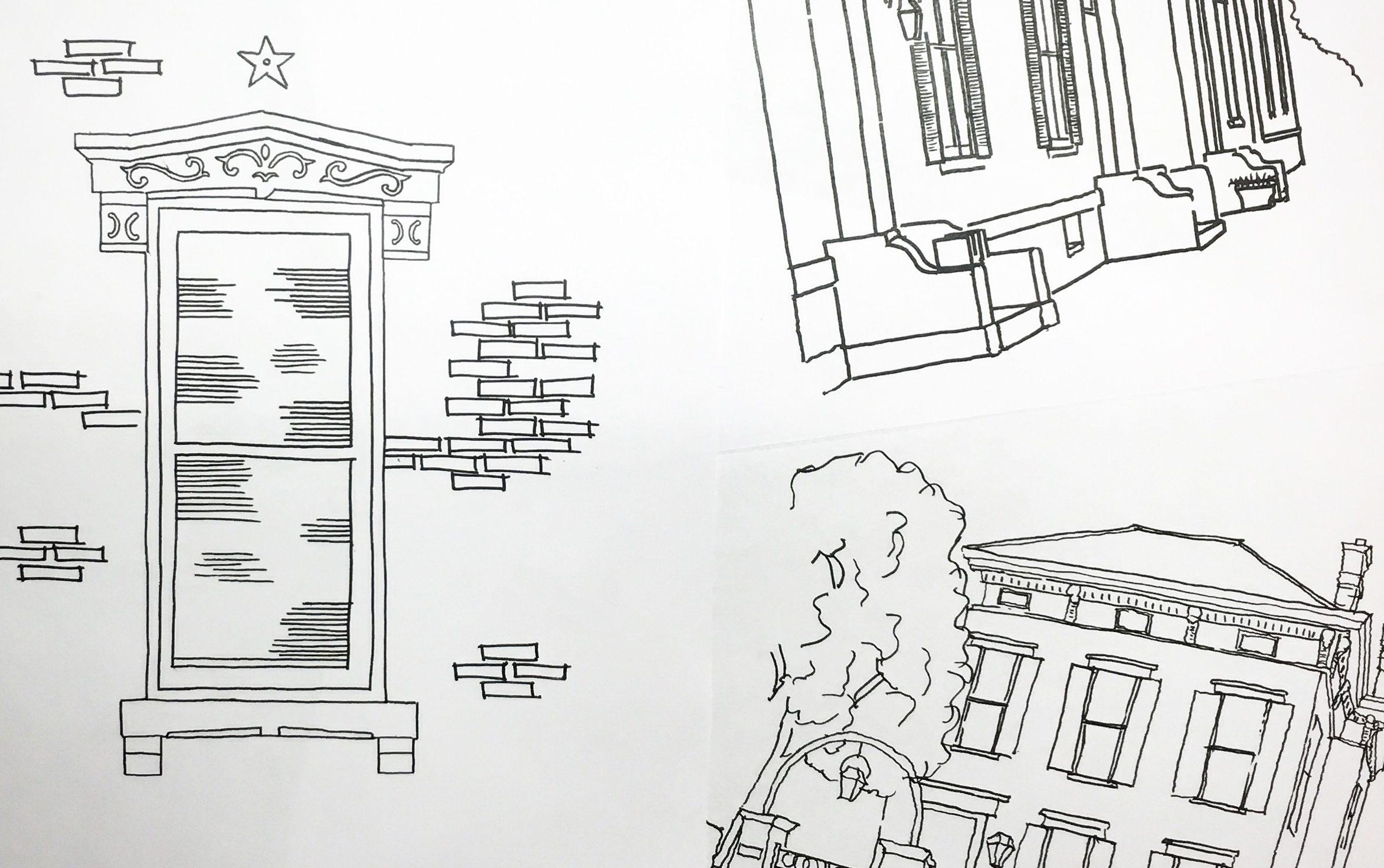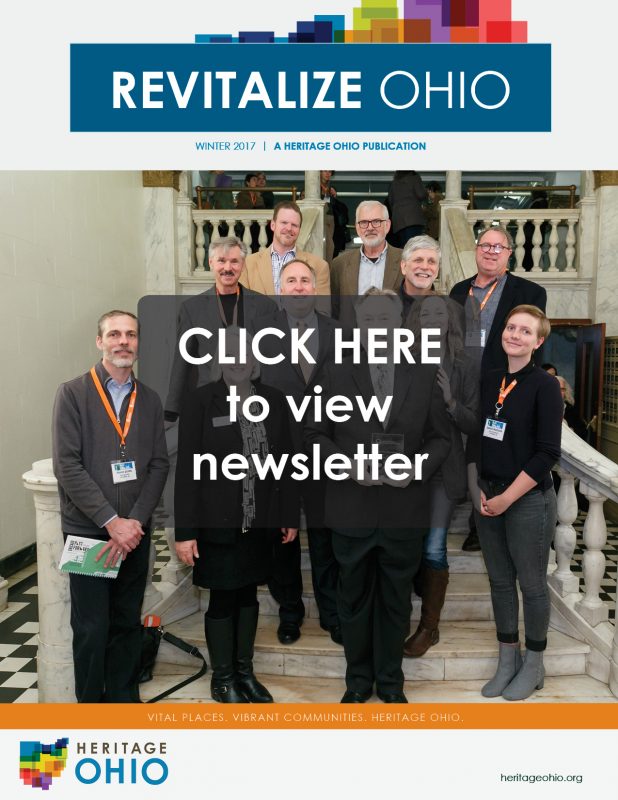Preservation Month Webinars: Preservation Contracting
Wednesday, April 24th – 1:00 pm-2:00 pm
Happy (early) Preservation Month! We’re excited to announce our 2019 Preservation Month Webinars | Profiles in Preservation, focused on preservation professionals who work in different aspects of the HP field. We’re kicking off the series Wednesday, April 24, beginning at 1pm, with Lindsay Jones of Blind Eye Restoration for a discussion and her perspective on preservation contracting.
Stay tuned as future webinars will cover aspects of historic preservation such as real estate development, preservation consulting, and more. Additional webinars are scheduled for May 8, 15, 22, and 29.
Thank you very much to our Heritage Ohio members who help to make our work possible.

Become a member of Heritage Ohio today and enjoy a full year of monthly webinars and many other benefits.
Rawson Block Easement
321 S Main St.
Findlay, OH 45840
December of 2004 was an exciting time for Heritage Ohio’s nascent easement program, when it accepted its first easement, taken on the Rawson Block located in downtown Findlay. A lot has changed since we accepted that first easement nearly 14 years ago, including exterior protection as a result of the easement.
Before the IRS adopted new regulations on easements and their donations, only the façade of a building was commonly “donated” in an easement agreement, and that was the case with the Rawson Block. However, our Rawson Block easement also included a loss of development rights, insuring there is never any building “up” on the site. Now, the IRS stipulates that for an owner to realize a charitable contribution (and subsequent federal tax deduction) the entire building envelope must be included under the terms of the easement. The IRS also enacted new regulations to ensure that only legitimate nonprofit organizations such as Heritage Ohio hold easements on historic properties. In fact, the Department of Justice went so far as to bring suit against the Trust for Architectural Easements over its easement acceptance practices.
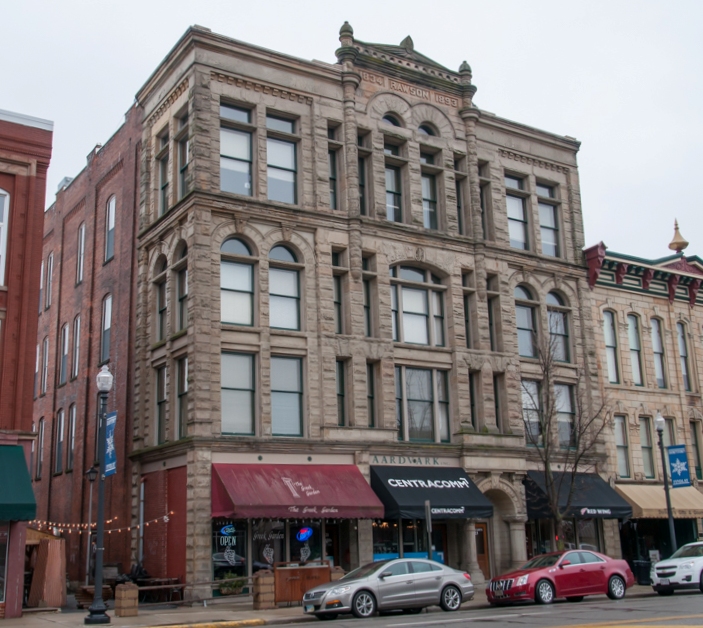
As is the case with many of our easements, the agreement included stipulations for exterior alterations and stipulations restricting new construction either on the property or above the building (the loss of development rights mentioned earlier).
Working with the Rawson Block owners was a unique experience, too, as the LLC owner of the building comprised more than 50 community members who pooled their money to purchase and rehab a historic landmark in their downtown. And it’s a lesson we still enjoy sharing today: before you die of old age waiting for the rich developer to come riding in on his real estate unicorn to save your buildings, gather your residents together, pool your money, and save your places that matter NOW! It can be done, as the folks in Findlay can attest to.
![]()
YOP: Collaborative Coloring Book
Saturday, January 26, 2019 at 1 PM – 4 PM
Join us to create a collaborative coloring book! We need your help to draw images of historic places in Ohio, that have been revitalized thanks to historic tax credits. No need to worry about your artistic skill level, because we will have tracing paper and printed images of buildings. Trace a building and add your own artistic flare.
Make sure to sign your drawing, because all of our illustrators will receive recognition in the coloring book.
This will be a fun opportunity for you to learn a bit about historic tax credits, learn cool new uses for old buildings, and flex your artistic muscles.
We will be at the Main Branch Columbus Metropolitan Library (96 S Grant Ave, Columbus, OH 43215) in meeting room 3A.
People of all ages are welcome to participate in YOP activities.
For more information about YOP and updates on this event check out their Facebook page
And the winner is…
Congratulations to Ashley Combs of Middletown for winning our Preservation Month Photo Contest! Ashley’s winning entry will be featured on a future cover of Revitalize Ohio, plus we’ll honor her winning image at our Annual Conference this October in Cleveland. Thank you to everyone who entered a photo this year, and to everyone who voted!
Rustic Treasure (Bank Vault inside the Historic Goetz Tower)
The Goetz Tower is a seven-story Art Deco building that was constructed in 1930 and is located in the heart of Downtown Middletown, Ohio. This is a beautiful historic building that offers unique architectural features everywhere you turn inside and outside. Over the years the Goetz has survived decades of changes that have occurred in our City. We look forward to the future and bringing this space back to life to be enjoyed by all.
Middletown is currently in the process of revitalizing its downtown and has been very successful in bringing new businesses and people over the last two years. Once renovated this building will become another destination location for visitors as well as provide a home for new residents. Every downtown that has come back from neglect and abandonment has done so with a residential component downtown. The Goetz Tower is a crucial component in the revitalization of Downtown Middletown.
The City of Middletown believes that this building has the potential to be converted into a destination location for premier space for offices, retail, and restaurants as well as offer luxury apartments for those wanting to get away from the suburban lifestyle and reconnect with their community in a place like our up and coming downtown.
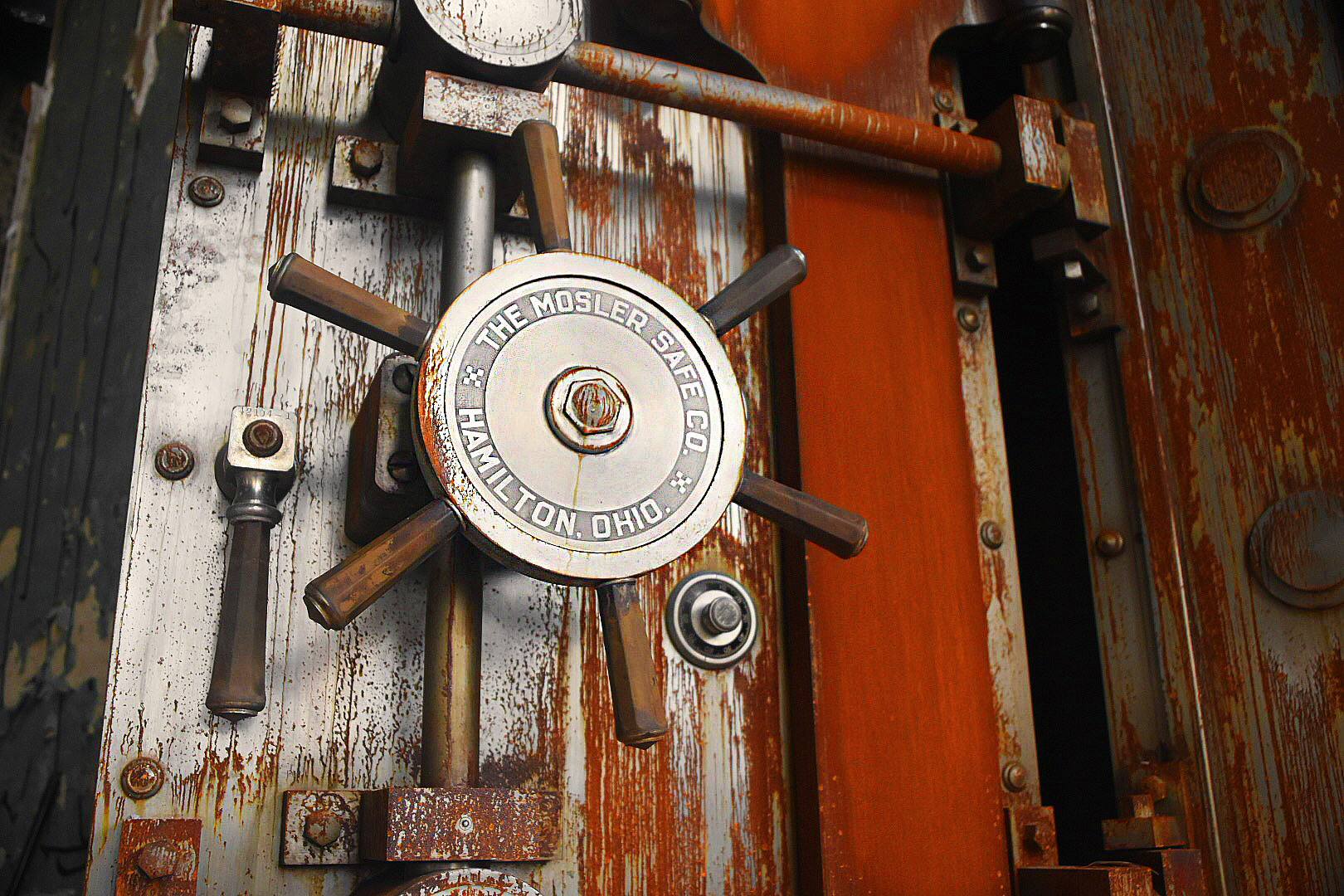
![]()
Preservation Month 2018 Photo Contest open for entries!
Happy Preservation Month! We’re celebrating Preservation Month with our 9th Annual Preservation Month Photo Contest, now open for entries! Our theme for 2018 is “This building isn’t empty…it’s full of opportunity” so we’re looking for entries showing great potential for reuse for our historic buildings.
When you get that perfect shot, submit it to us via our online submission form here. We’re allowing one entry per person, so you have to choose your favorite and get it to us! You can also post your entry on our Facebook wall using the hashtag #heritageohiophotocontest. You can also enter through Instagram, again using the hashtag #heritageohiophotocontest. Once our Preservation Committee chooses finalists, we’ll open the contest to online voting. Your vote will help us choose the winner!
Once again, this year’s winner will have their image featured on the cover of Revitalize Ohio. Happy (early) Preservation Month and may the best photo win!
Dates to remember:
Entries accepted: Monday, April 16-Monday, May 14
Finalists announced: Friday, May 18
Online voting for finalists: Monday, May 21-Tuesday May 29
Winner announced: Wednesday, May 30
Some guidelines to remember: be creative and original with your photo composition…we love photo entries depicting historic buildings in use (or, for this year, historic buildings waiting to be in use); make sure your image highlights Ohio subject matter; and finally, use your best judgment as to whether or not you should get permission from the building owner before photographing your subject matter.
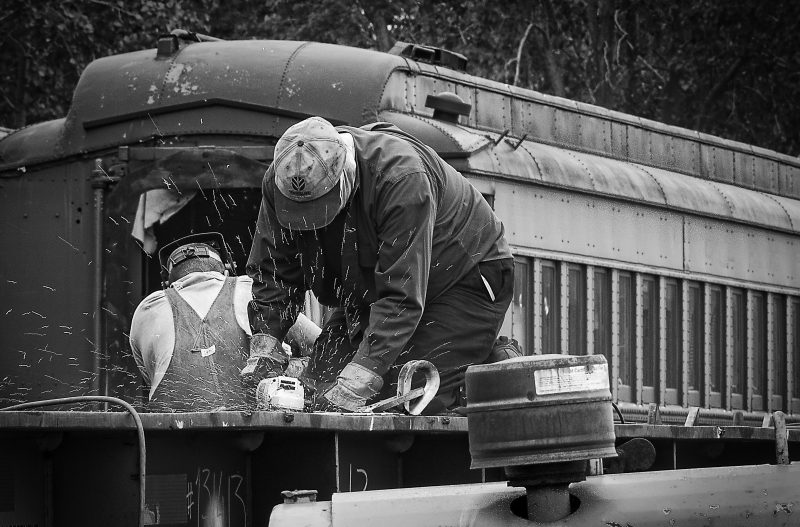
Maybe a photo of last year’s winning entry from Judith Khaner will help encourage your own ideas for a winning entry this year?
![]()
Del Monte Easement
341 South Third St,
Columbus, OH 43215
Last year at this time we were putting the finishing touches on an easement for the Del Monte Building in Columbus (no relation to the company supplying your bananas!) While many of our easements are taken on large commercial buildings in downtown areas, the Del Monte is a smaller example. Originally built as a six-unit apartment building in the early 1900s, the building served a need for living units as Columbus experienced a growth phase during the first quarter of the twentieth century.
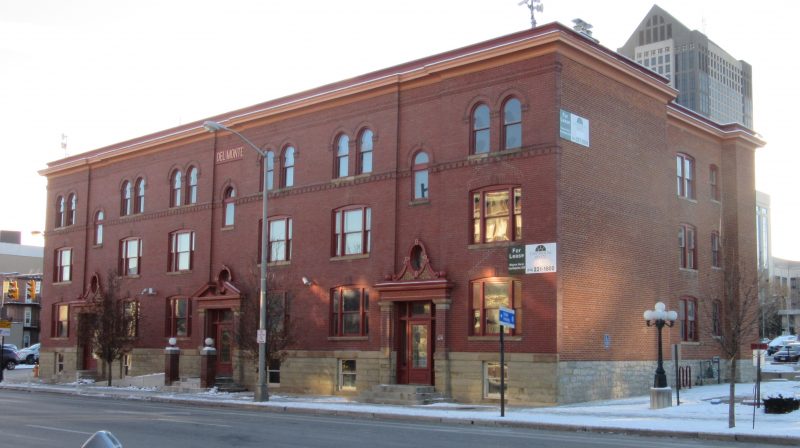
The Del Monte is a handsome three-story masonry building with a buff stone foundation and simple cornice. The building features numerous window openings, so even in the early 1900s, the units must have had a light and airy feeling.
Joyce Barrett commented on the positive impact of the easement: “Even modest downtown buildings can benefit from the owner placing an easement on the property, making this a win-win for the owner and for preservationists. In the case of the Del Monte Building, we’ve ensured that a historic building not under local design review will be preserved and enjoyed for generations to come. And the owner can receive a tax deduction for donating the easement.”
![]()
Akron Easement
800 Dan St
Akron, OH 44310
Our easement program has been active since 2004, when we accepted our first easement on the Rawson Block in Findlay. Over the years we’ve seen how the program can be adapted: we’ve worked with owners in a variety of communities, and we’ve worked with a variety of property owners, including commercial property owners, nonprofit owners, and municipalities. Additionally, easements have been placed on buildings well before a full-scale rehab has been completed, and years after a large-scale rehab was completed.

The main Reserve Training Building, constructed in 1956
In Akron, we accepted an easement on the former Naval and Marine Corps Reserve Center in 2015, as the result of a Section 106 agreement forged among the City of Akron, the US government, and the State Historic Preservation Office. Briefly, a Section 106 consultation among preservation interests is triggered when federal funds are used that could affect a resource either listed in the National Register, or eligible for listing in the National Register. A Section 106 consultation can also be triggered when the action of a federal agency, in this case, the US government, could result in an adverse effect on the historic resource. In Akron, the US government was divesting itself of the reserve center, as a caretaker for the Navy, and the federal loss of site control was deemed an adverse effect, since a new owner could demolish the historic buildings on site.
While we ideally like to see Section 106 negotiations end when a viable preservation solution is found that all parties can agree to, the reality is that many times the Section 106 agreement paves the way for the demolition of the historic resource in question. Thankfully, in the case of Akron, the stakeholders agreed that by donating an easement in perpetuity to Heritage Ohio, the reserve center would be permanently preserved, thereby negating any adverse effect from changes in ownership, now or in the future.
“We were pleased to be part of a creative preservation solution in the Section 106 process, providing an outcome everyone could support, while giving us the ability to ensure the site’s continued preservation. We’re hopeful we can assist on future Section 106 agreements that translate into wins for preservation,” stated Joyce Barrett, executive director.
![]()
Fire Awareness & Prevention Downtown Webinar
December 6th, 2017 1 pm – 2 pm
This course has pending AIA HSW credit.
With the recent fires destroying communities on the west coast, being in the midst of the holiday season (which is particularly fire risky), and having had our fair share of disastrous downtown fires in communities around Ohio, it is always a good time to talk about prevention. Fires are by their very nature destructive, when it comes to downtown, there is so much at stake when a building burns down. It could be someone’s home; lives could be at risk; and it could be a small business that has been an integral part of the community for years, that now has no way of rebuilding. Furthermore, every building in the downtown is a part of the community identity and history, when they burn a piece of that shared story is lost forever.
Join Heritage Ohio and Chief John Donahue of Deleware, Ohio for a webinar discussing the potential fire hazards with concern to downtown and what can be done to proactively prevent the devastation caused by downtown fires. This program will focus on the City of Delaware and steps that the downtown businesses, building owners and City Departments have taken to reduce the risk from fires. Delaware has experienced several downtown fires in their historic buildings. Working together, a community can take steps to reduce the risk and maintain the historic buildings.
Heritage Ohio Members Register Here
Not a Member? Join Heritage Ohio now to get access.
 John Donahue is the Fire Chief for the City of Delaware, and served in the capacity for over 11 years. Prior to coming to Delaware, he served as the Assistant Fire Chief in Temple Terrace, Florida. Chief Donahue has served in many capacities in the fire service, including overseeing the fire prevention efforts in old historic downtowns. Both he and his wife are originally from the Cincinnati area. They have two grown daughters.
John Donahue is the Fire Chief for the City of Delaware, and served in the capacity for over 11 years. Prior to coming to Delaware, he served as the Assistant Fire Chief in Temple Terrace, Florida. Chief Donahue has served in many capacities in the fire service, including overseeing the fire prevention efforts in old historic downtowns. Both he and his wife are originally from the Cincinnati area. They have two grown daughters.
![]()
Mercantile Block Easement
228-236 High St,
Hamilton, OH 45011
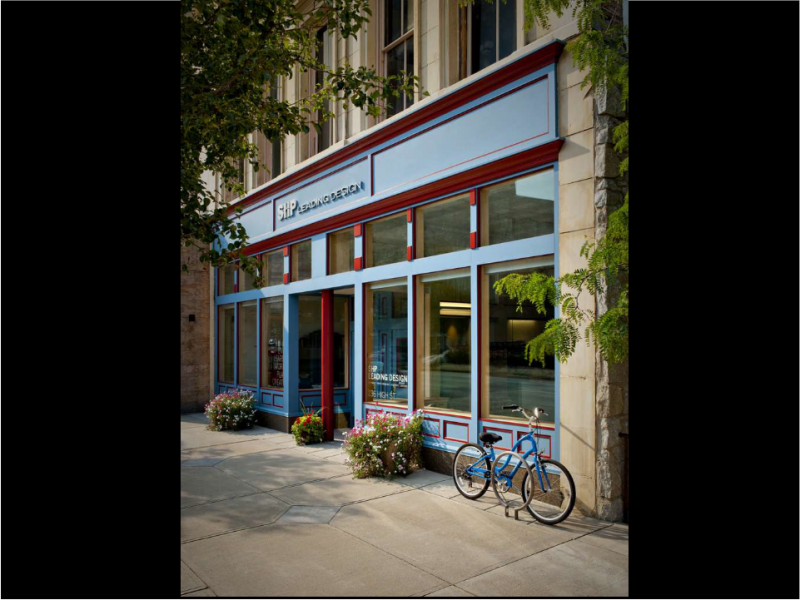
Our easement program has been active since 2004 when we accepted our first easement on the Rawson Block in Findlay. Over the years we’ve seen how the program can be adapted: we’ve worked with owners in a variety of communities, and we’ve worked with a variety of property owners, including commercial property owners, nonprofit owners, and municipalities. Additionally, easements have been placed on buildings well before a full-scale rehab has been completed, and years after a large-scale rehab was completed.
In Hamilton, we accepted an easement on the Mercantile Block in 2011 as the owner was completing a full rehabilitation. The rehabilitation and subsequent leasing of the building represented a turning point in downtown Hamilton’s revitalization. Since the completion of the Mercantile Block, nearby buildings have been rehabilitated, and Hamilton’s downtown is enjoying a resurgence.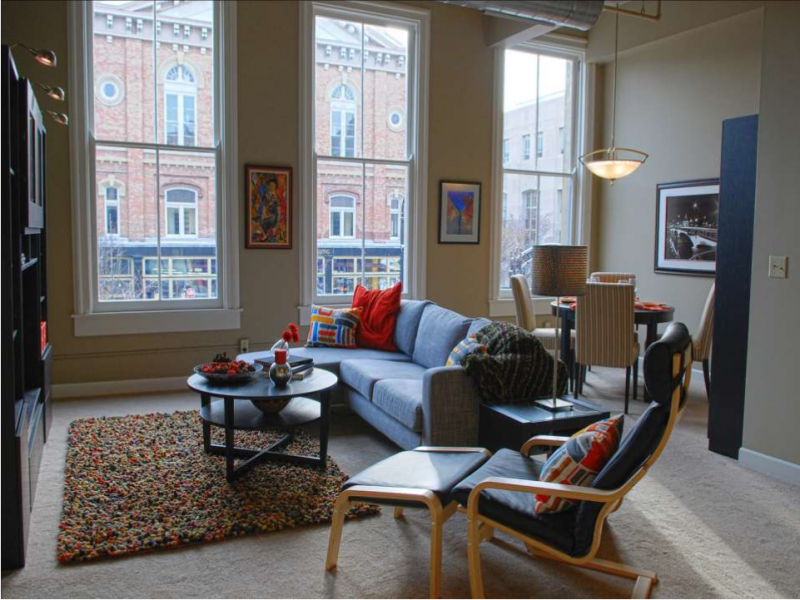
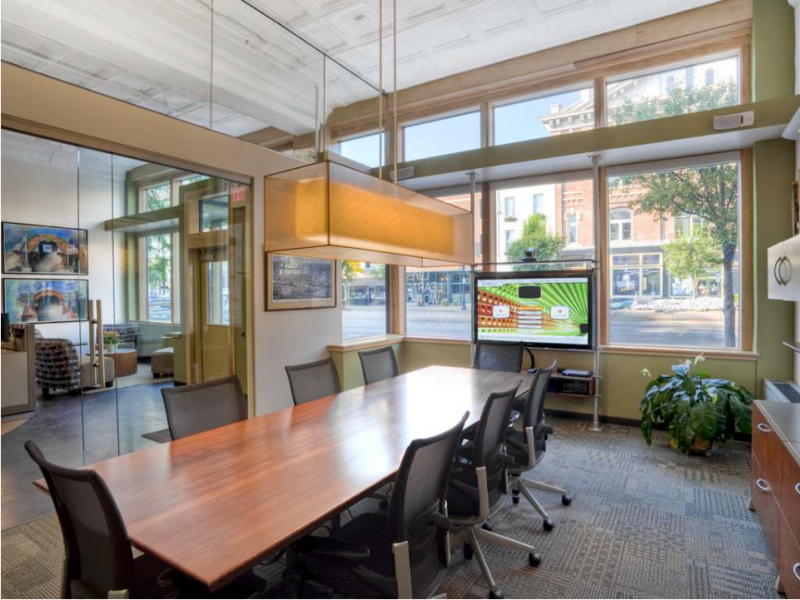
Director Joyce Barrett commented on the Hamilton project: “When the building owner came in, he had a vision for upscale housing that was non-existent in the downtown at the time. There were plenty of doubters who questioned whether he could ever rent the apartments, but he created a unique living opportunity downtown and tapped into a housing need that residents flocked to. We were excited to play a small part in downtown’s resurgence by placing an easement on the Merc.”
As the series of images below show, there’s no such thing as “too far gone” when a building owner leverages private capital with tax incentives and a vision for how a forgotten building can be reborn to once again play a key role in the vibrancy of its downtown.
Below you can see the transformation of the deteriorated interior into a modern working space. For even more pictures of the transformation take a look a this slideshow.
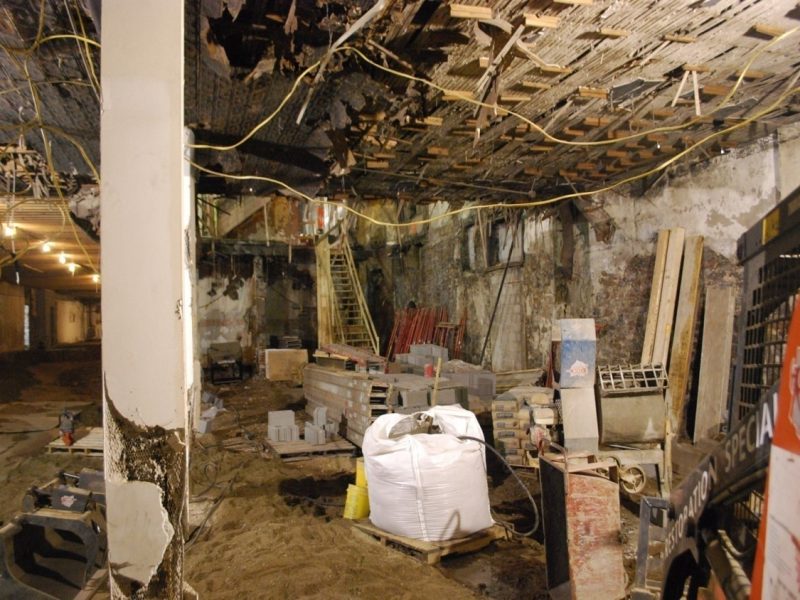
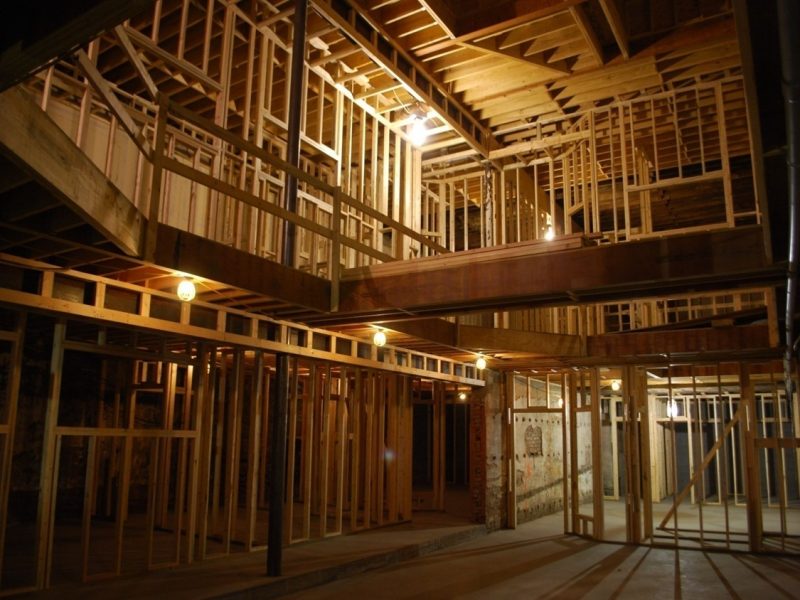
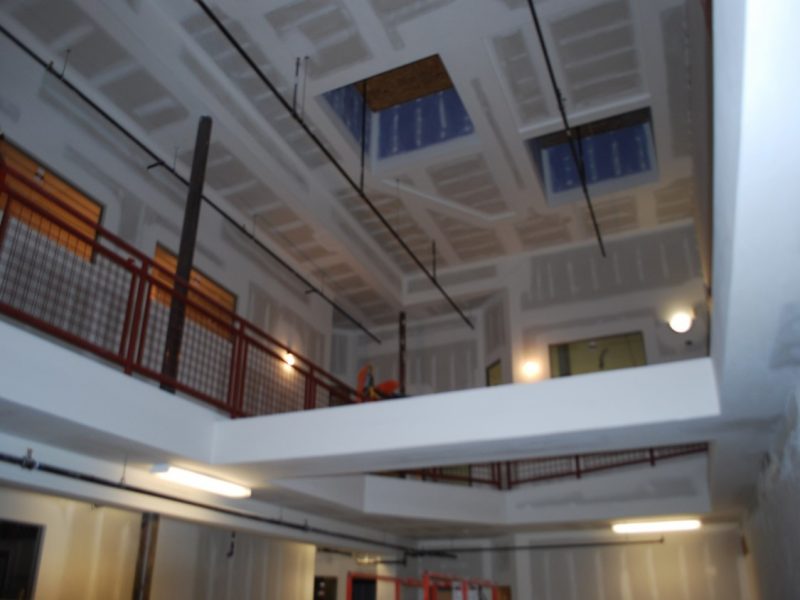
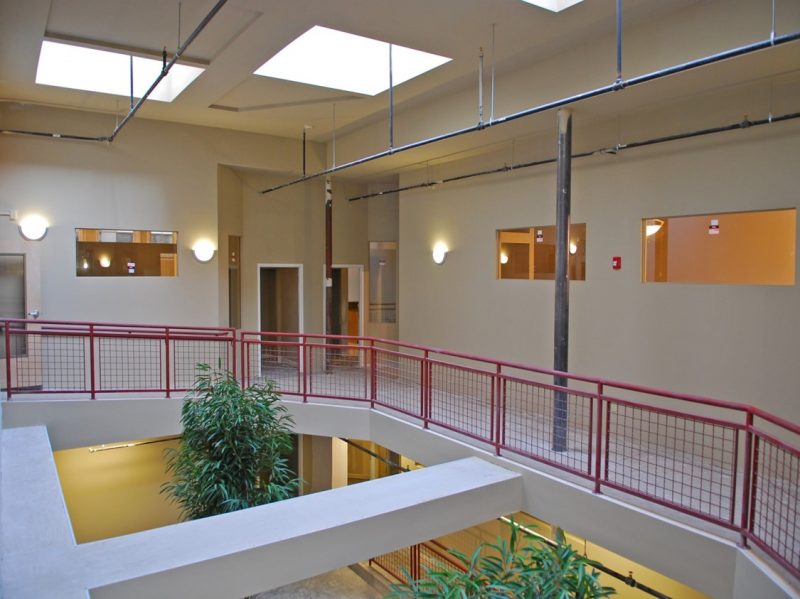
![]()



